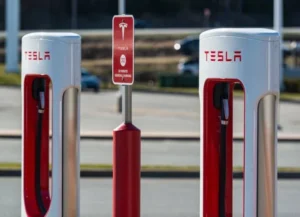Cities with rapid population growth tend to experience a more significant inflation rate due to increased demand for goods and services.
According to a recent analysis by WalletHub, consumer prices in the U.S. rose by 3.2% in February compared to the previous year. Still, these increases were not uniformly felt across the nation.
The AP reports that three rate reductions were proposed for 2024, with the first slated for June. However, due to ongoing high inflation, financial markets anticipate only one rate cut this year, scheduled for November, as indicated by futures prices monitored by CME FedWatch.
The study conducted by the personal finance site revealed that the Dallas metropolitan area experienced the highest year-over-year price surge, reaching 5.3%. This rate was approximately three times higher than the inflation rate in the Anchorage, Alaska, metropolitan area, where prices rose by 1.7%—the lowest increase among the 23 metropolitan areas examined in the study.
Despite the significant slowdown in price hikes from the peak of the four-decade high in 2022, many consumers continue to feel the strain of historically high inflation rates that started in 2021.
Inflation remains a persistent concern, consistently ranking as a top worry in polls, as it surpasses the Federal Reserve’s 2% target for the overall economy.
Area prices rose 2.2 percent in the past two months and 3.2 percent from a year ago.
- Food prices rose by 1.0 percent over the two months ending in April. Prices for food at home increased by 0.4 percent, driven by higher prices for dairy and related products, which saw a 4.9 percent increase. Meanwhile, prices for food away from home increased by 2.3 percent during the same period.
- Over the year, food prices increased by 2.2 percent. Prices for food at home rose by 0.6 percent compared to a year ago, with higher prices observed in four out of six grocery categories. On the other hand, food prices away from home increased by 5.6 percent.
- The energy index surged by 10.3 percent in the two months leading up to April, primarily driven by a substantial increase in gasoline prices, which rose by 21.6 percent. During the same period, electricity prices increased by 1.5 percent, while prices for natural gas services remained unchanged.
- Over the past year, energy prices increased by 9.9 percent, mainly due to a significant rise in gasoline prices, up 12.8 percent. Additionally, electricity prices surged by 14.3 percent, and prices for natural gas services advanced by 2.7 percent.
- The index for all items, excluding food and energy, rose by 1.7 percent in the most recent two-month period. Increased prices for recreation (3.4 percent) and shelter (0.8 percent) were somewhat balanced by declines in household furnishings and operations (-2.6 percent) and used cars and trucks (-0.5 percent).
- Over the year, the index for all items, excluding food and energy, increased by 2.7 percent. This increase was driven by higher prices in other goods and services (13.4 percent), apparel (3.4 percent), and shelter (2.8 percent). However, it was partially offset by decreases in prices for new and used motor vehicles (-7.0 percent) and household furnishings and operations (-6.0 percent).
Inflation has emerged as a central issue in the forthcoming presidential election. According to Patrick Murray, the Monmouth University Polling Institut director, partisan affiliation dramatically influences perceptions of responsibility for inflation. President Joe Biden has emphasized the deceleration of inflation rates in recent months and attributed some of the uptick in consumer prices to corporate greed. Nevertheless, Republicans have vocally criticized him, alleging that his economic policies have fueled these retail price hikes.
Despite the regional variations highlighted by WalletHub, most of the metropolitan areas studied witnessed significant increases in housing expenses, as reported by data from the Bureau of Labor Statistics. Nationally, housing costs surged by 5.7% in February compared to the previous year, constituting two-thirds of the overall increase in the core consumer price index over the past 12 months, excluding food and energy. However, these increases were offset by declines in other sectors, such as vehicle and energy prices.












